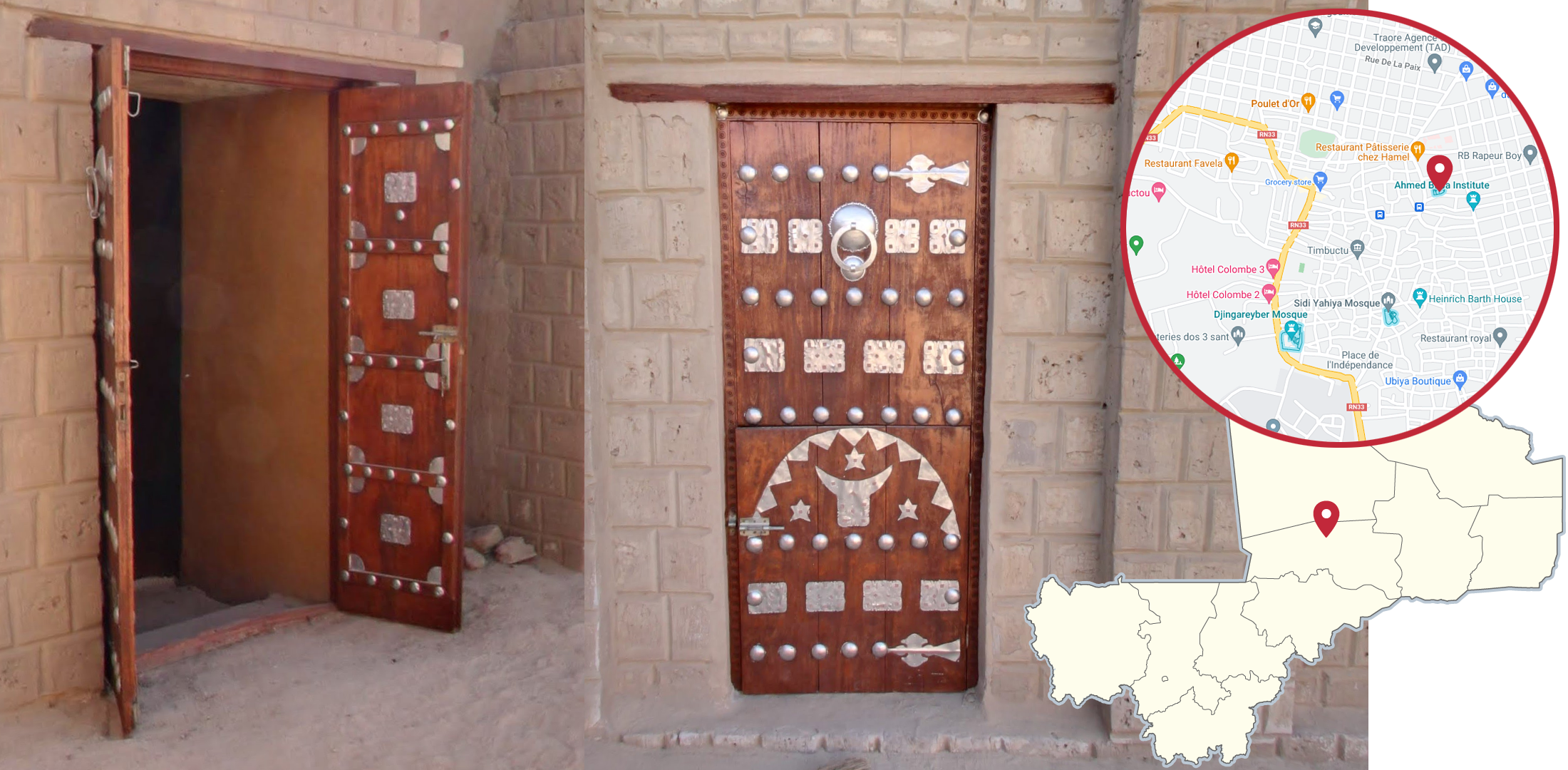
Mali
All this trekker coverage is made with a regular consumer-grade camera on a tripod. This gives all the coverage a very peculiar and recognizable look, which is different from the normal backpack trekkers. It can have a slightly ‘ethereal’ look to it, but it is recommended to simply click on a few of the locations to get a feeling for what it looks like. Objects in the image will usually have motion blur, and slightly saturated colours.
From here on, the Mali tripod trekkers will be simply referred to as “tripods”.
NOTE: Tripods can also be found in several other countries.
Almost all the tripods focus on showing historical mosques. These tripods usually have an indoor part and an exterior part, which are sometimes not connected to each other.
These mosques have a recognizable look: they are made out of mud bricks and adobe plaster. The walls of the buildings are decorated with wooden sticks. Inside, you will usually see the same adobe walls, and prayer rugs on the floor.
The exterior parts of the mosque tripods can look like a normal street. These will sometimes have enough information available (when moving) to be included in pinpointable maps, like A Community World.
This guide has separate sections for the pinpointable and non-pinpointable coverage. You can choose to study only the coverage that is relevant for competitive maps, or all the coverage. Note, however, that the interiors of the mosques are not considered pinpointable, even though they are covered in the section next to their respective exteriors.
Niono Mosque
Sidi Yahiya Mosque (Timbuktu)
The roads around the Sidi Yahiya mosque are a mixture of sand and tiles shaped like slices of bread, which within Mali, is unique to this coverage.
The surrounding buildings are mostly built of bricks having a peachy orange colour with a brown undertone. This can also be found around the other two mosques with coverage in Timbuktu. The area generally looks busier than around the Djingareyber mosque.
The interior of Sidi Yahiya mosque is recognized by the yellow painted walls combined with the bottom of the walls, which consists of unpainted bricks. The mosque has a courtyard, with walls made of bricks and a floor made of bright, square tiles.
Djingareyber Mosque (Timbuktu)
Sankoré Mosque (Timbuktu)
Gao Mosque
Djenné Mosque
Mopti Mosque
The Mopti mosque is similar in style to the Djenne mosque, but has trees growing closer to the walls and a slight amount of clouds in the sky. The streets with coverage around the walls of the mosque also appear more narrow than the ones in Djenne.
”Bamako” Mosque
In the north west of Bamako, you can find a tripod inside an empty modern mosque. The interior’s light blue walls and pink floor make this location instantly recognizable.
The coverage on the exterior is in the mosque’s yard. The outside walls are made of concrete, and are painted yellow and orange.
This coverage is severely misplaced, being actually located in an unidentifiable rural area, rather than inside Bamako.
Bandiagara Escarpment
This natural rocky gorge is part of the Bandiagara Escarpment. It features dry trees and bushes following the path. It is located southwest of Sangha Ogol Leye, and is the only completely rural coverage in Mali.
Miscellaneous misplaced tripods
Inside the Sankore mosque coverage in Timbuktu (but not connected to it), there are several misplaced locations: The inside of a tour business actually located in Bamako, a classroom, a couple of streets and some other miscellaneous places.
























